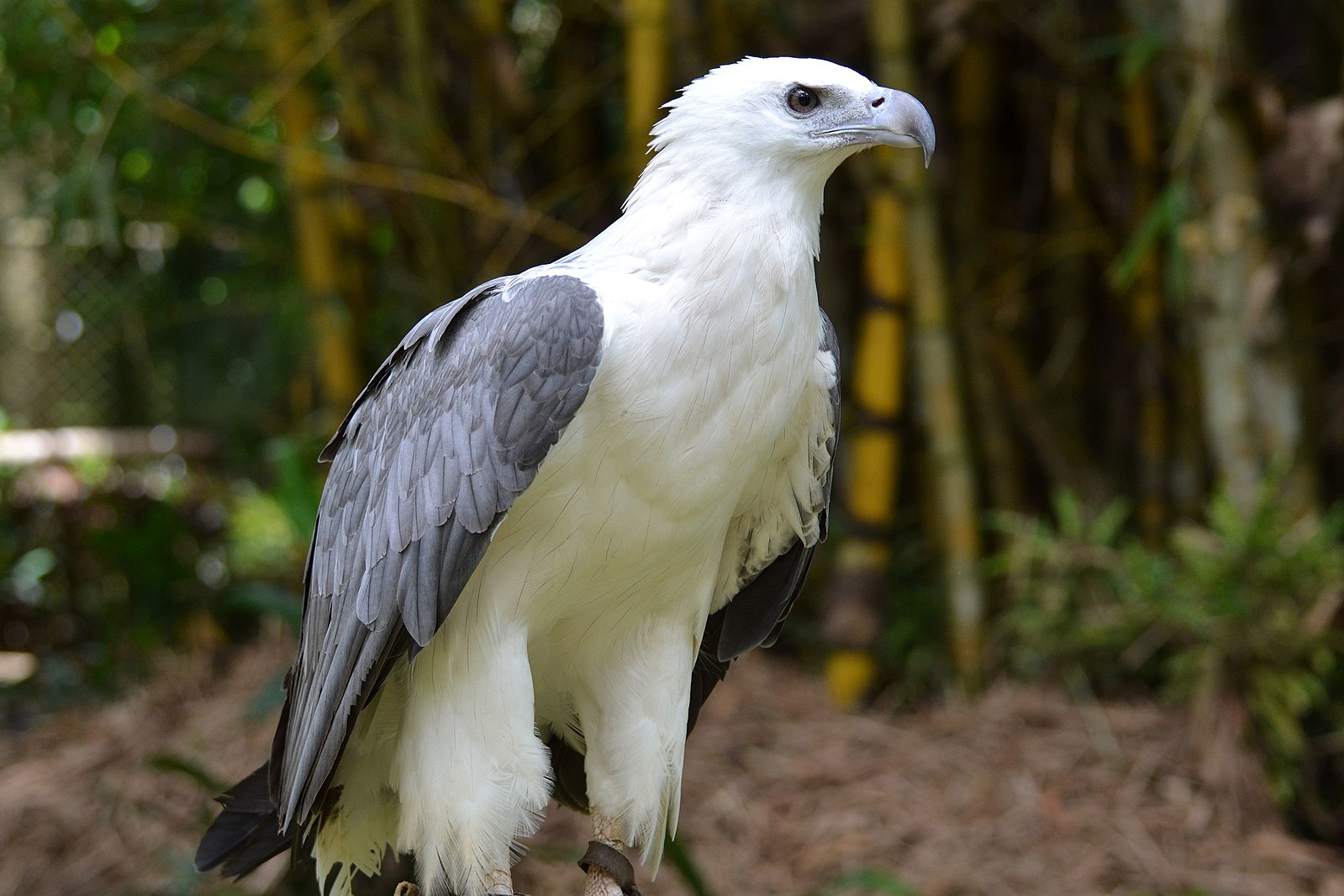The White-bellied Sea-eagle (Haliaeetus leucogaster) is a large diurnal bird of prey that belongs to the family Accipitridae and the genus Haliaeetus. It is a monotypic species, which means there are no recognized subspecies of this bird. This article will explore the unique characteristics and features of the White-bellied Sea-eagle, the only type of its kind.
Distinctive Features of the White-Bellied Sea-Eagle
The White-bellied Sea-eagle is a distinctive bird with a unique appearance. It has a white head, rump, and underparts, with a dark or slate-grey back and wings. The wingspan of this bird ranges from 1.78 to 2.2 m (5.8 to 7.2 ft), and the sexes are similar, but females are slightly larger than males, with a weight range of 2.5-4.5 kg (5.5-9.9 lb) compared to 1.8-3 kg (4.0-6.6 lb) for males.
Juvenile White-bellied Sea-eagles are predominantly brown, with pale cream-streaked plumage on their head, neck, nape, and rump areas. The plumage becomes more infiltrated with white until it acquires the complete adult plumage by the fourth or fifth year.
Habitat and Distribution of the White-Bellied Sea-Eagle
 Image source: bellied sea eagle by shankar s
Image source: bellied sea eagle by shankar s
The White-bellied Sea-eagle is found in coastal areas, islands, estuaries, large inland water bodies, lakes, rivers, and wetlands. They usually breed near the water with some forest cover or in rocky areas. These birds are generally territorial, with some birds forming permanent pairs that inhabit territories throughout the year, while others are nomadic. Immature birds are generally dispersive, with many moving over 50 km (31 mi) away from the area they were raised.
Feeding Habits of the White-Bellied Sea-Eagle
The White-bellied Sea-eagle is an opportunistic carnivore and consumes a wide variety of animal prey, including carrion. They hunt mainly aquatic animals, such as fish, turtles, and sea snakes, but they will also take birds, such as little penguins, Eurasian coots, and shearwaters, and mammals (including flying foxes) as well. White-bellied eagles feed on carrion such as dead sheep, birds, and fish found along the waterline, as well as raiding fishing nets and following cane harvesters.
Breeding and Nesting Behavior of the White-Bellied Sea-Eagle
The breeding season of the White-bellied Sea-eagle varies according to location, with birds in Papua New Guinea breeding during the dry season, and birds in Australia breeding from June to August. During the breeding season, a pair of White-bellied Sea-eagles perform skillful displays of flying, such as diving, gliding, and chasing each other while calling loudly. They also perform a talon-grappling display where the pair will fly high before one flips upside down and tries to grapple with the other. These birds usually choose tall trees or man-made pylons to nest in, building a large stick nest that is used for many seasons in succession.
In conclusion, the White-bellied Sea-eagle is a unique and distinctive bird of prey, with no recognized subspecies or other types within the species. Its distinctive features, habitat, feeding habits, and breeding behavior make it a fascinating and important part of the ecosystem in the coastal and near-coastal regions where it is found.
References:
- White-bellied Sea-Eagle (Haliaeetus leucogaster) – The Peregrine Fund
- White-bellied sea eagle – Wikipedia
- White-Bellied Sea Eagle – Facts, Diet, Habitat & Pictures on Animalia.bio
- White-bellied Sea-Eagle Icthyophaga leucogaster – eBird
- White-bellied Sea-Eagle – The Australian Museum

